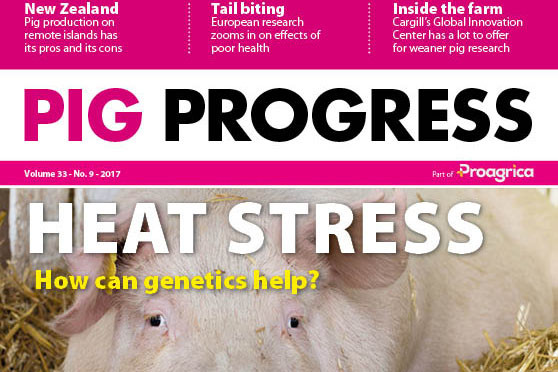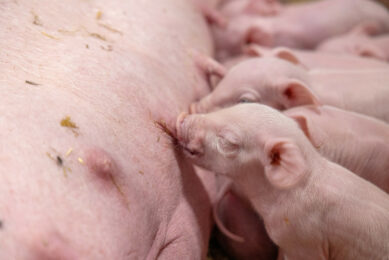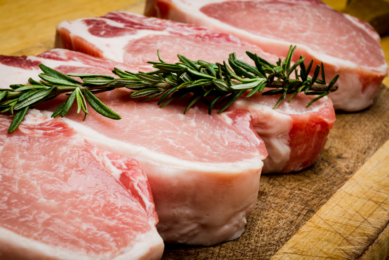Latest print issue looks at genetics and lung health

The themes ‘lung health’ and ‘genetics’ are both very prominent in the latest edition of Pig Progress. The edition can now be read digitally.
What can breeding do to avoid heat stress?
The lead article in edition 9 of 2017 is ‘A genetic view on heat stress in breeding’. In cooperation with French-based company Animine, a range of scientists with different expertise share their views on origins and solutions against the problem of heat stress.
In this edition, Jean Luc Gourdine of the French National Institute for Agricultural Research (INRA), takes the genetic approach. As the cover picture suggests, at least a Large White sow can play a role in making pigs better resistant against hot climates (pages 16-17).
Topigs Norsvin & plans for the future
Erik Ordelman, a reporting colleague of the Dutch agricultural weekly Boerderij, took a quick look at Topigs Norsvin, one of the world’s leading pig genetics companies and heard about the future research ambitions of this company. (page 15)
Lung health issues addressed
In terms of lung health, a series of articles is devoted to this topic. Dr Gabriele Schagemann and Dr Eduardo Fano of Boerhinger Ingelheim zoom in on the fact that in the breeding cycle, one of the most dangerous moments with regard to Mycoplasma hyopneumoniae (M. hyo) infection is the moment when new gilts are being introduced.

In the acclimatisation process that follows, vaccination is a tool that is most widely used, they explain on pages 24-25.
Dr Jordi Mora of Eco Animal Health debates that a different method to control M. hyo in a pig herd is by treating the sows prior to parturition with antibiotics, as can be read on pages 30-31.
Often mentioned in articles related to lung health cases, both ELISA and PCR are common methods to establish what animals are suffering from. What exactly is the difference between one method and the other? Why is it important to know what both do – and do they look at exactly the same? The answer is no, in a well-written explanation by Nardy Robben of Thermo Fisher on pages 27-28.
Amino acids in swine diets
Between health and nutrition issues are the questions how to improve animal health through nutrition, and a novel approach by Dupont’s Danisco Animal Nutrition does exactly that. Dr Laura Payling and Rachael Hardy explain how amino acids in swine diets can be optimised on pages 12-14.
A look behind the scenes in a trial farm
Our monthly farm visit took Pig Progress editor Vincent ter Beek to Velddriel, the Netherlands, for a visit to the Global Innovation Center, a research facility for e.g. swine of Cargill Animal Nutrition. The farm was recently expanded with a hi-tech focus section for weaner pigs. Read the full report on pages 20-23.
Tail biting – is there a health component?
In our research series to explore the opportunities to produce swine without tail docking, associate professor Dr Janicke Nordgreen of the University of Life Sciences in Norway discusses the effects of poor health as a risk factor for tail biting, on pages 6-7.

The pig industry in New Zealand
Each month, Pig Progress also takes a look at a pig country and this month the plane of regular contributor Dr John Strak landed in Wellington to observe what is going on in New Zealand’s pig industry. His report can be read on pages 10-11.
Mixing weaner pigs and sow mortality
Last but not least, our columnists touch on very relevant topics as well. Monthly columnist John Gadd dives into ‘Mixing weaners without tears’, and presents on page 9 a brief checklist what not to forget. Dr Monique Pairis-Garcia of The Ohio State University wonders whether sow mortality is a welfare or a production issue – a relevant theme as death on sow farms appears to be on the increase (page 34).
To read all the articles in this issue, go to the magazine overview page and sign up with your current website login.











